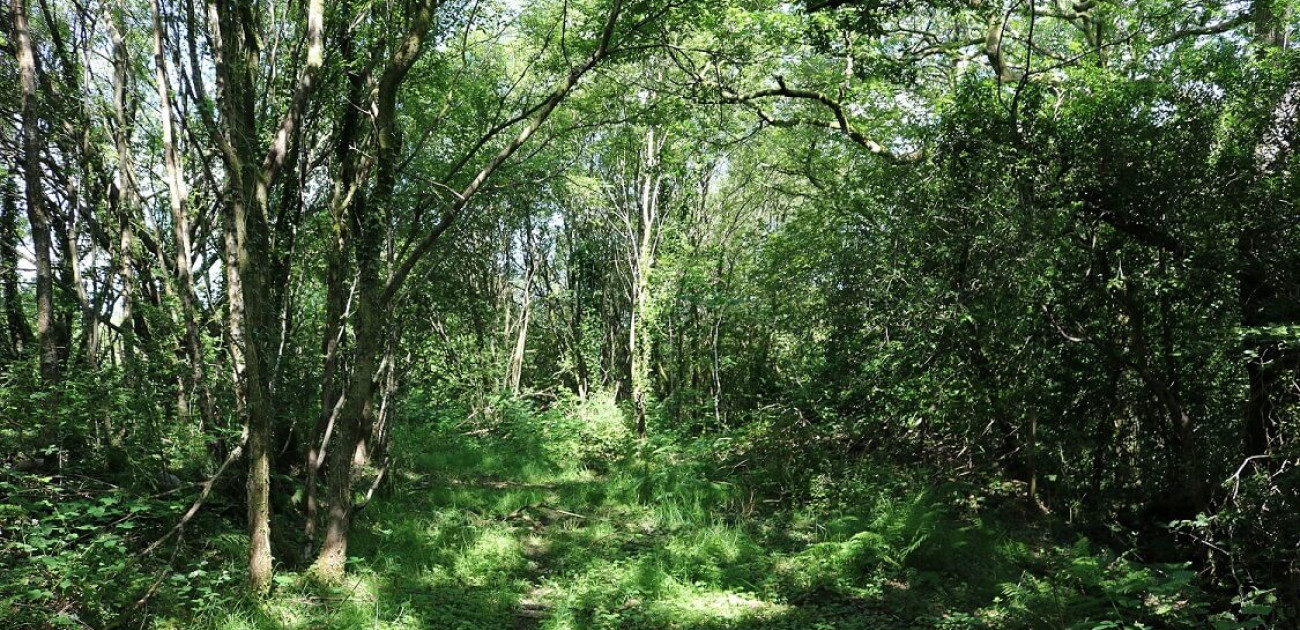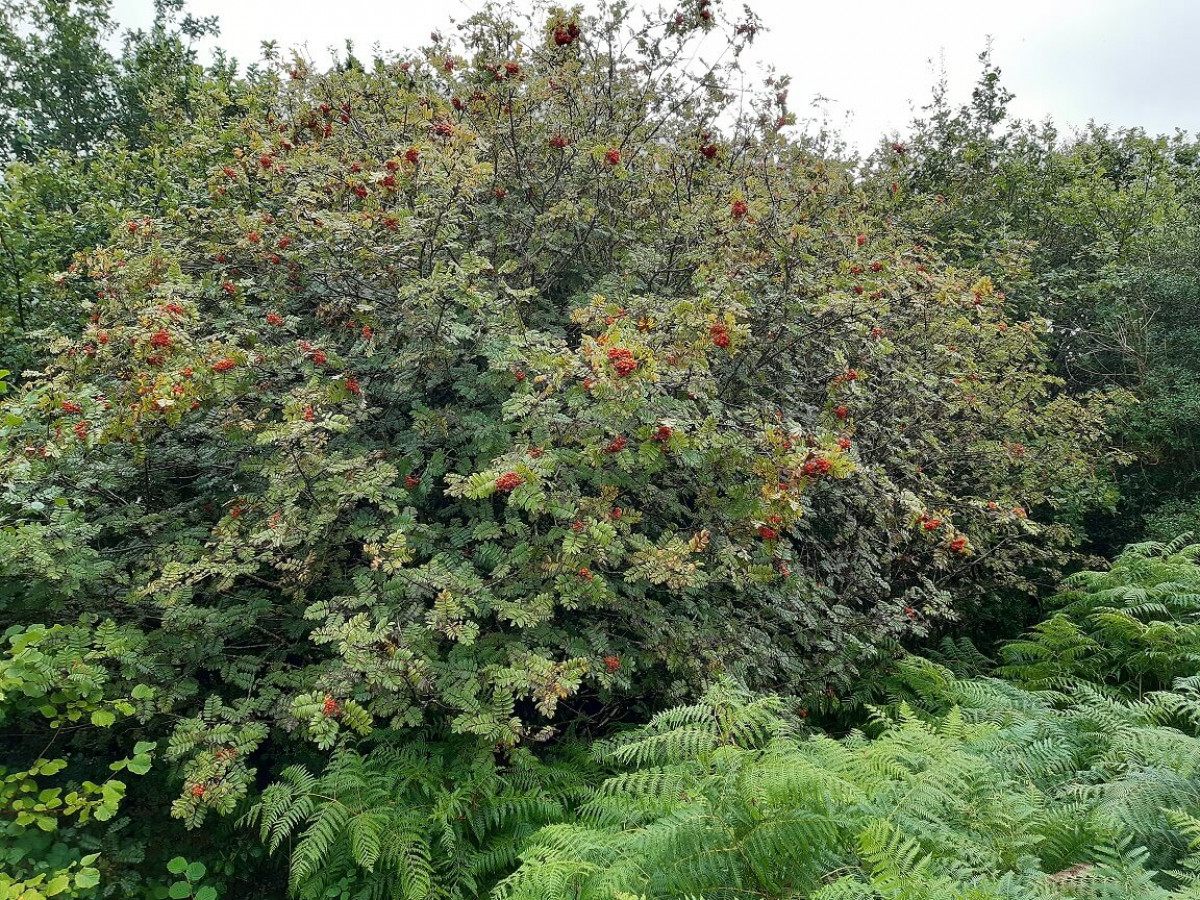20 February 2023
The First British Poem About Trees – ‘The Battle of the Trees’
'The Battle of the Trees' is an old Welsh poem that is about a magical battle where the magician, Gwydion, brings trees to life to help the Britons beat the Picts. This is my take on the poem.

Since Christmas, I have been deep in books on trees and recently have been on somewhat of a rollercoaster ride on old Welsh poetry. It began with Max Adams’ ‘The Wisdom of Trees’ and Guy Shrubsole’s ‘The Lost Rainforests of Britain’. These were fascinating books, especially Guy Shrubsole’s book which has the idea of temperate rainforest at its core, which really resonates with Sophie and me.
Both books also mentioned the oldest British poem about trees, ‘The Battle of Trees’ (Kat Godeu) by Taliesin. I have to admit my total ignorance as I had never heard of Taliesin nor his contemporary Aneirin until January this year. I hang my head in shame. I bought the translation of Taliesin by Gwyneth Lewis and Rowan Williams and Aneirin’s ‘Y Gododdin’ by Gillian Clarke. They are genuinely beautiful collections of poems.
They sent me into a crash course in early British literature and have revealed a whole new landscape for me, which I will explain over the next few blogs, which has changed quite a number of things.
Let’s begin with ‘The Battle of the Trees’. I have now read it in two versions (Marged Haycock; Lewis-Williams), but the most accessible is the Lewis-Williams version. The poem tells of a war fought by the druidic magician, Gwydion, who is advised by God to call on the spirits of all the trees to fight for him. The vanguard is led by the alder, perhaps not the first image that would come to mind, but it is found at river edges and is an early coloniser of woodland space. Birch is late to the battle, slow to put on its shining armour. Spiky blackthorn uses its thorns to great effect, while cherry trees raise the alarm and oak is the best. There have been lots of attempts to ascribe either hidden shamanic meanings to the poem as there is lots of shape changing going on, or the secrets of a hidden Celtic alphabet.
If we think of the poem as a beautiful piece of magic realism it begins to come to life. I think its structure falls into three areas: (i) poetic mood setting; (ii) imagining a wood as fighters in a battle – think of the Ents in the Lord of the Rings; (iii) a real battle.
If we begin with the mood setting, the poet, who will call T as I doubt it was Taliesin, asks us to enter an imaginary world where we are the world around us. We have become disconnected from the environment in the last 200 years or so, but in the past we led a life intimately entwined with nature. T uses this concept in other poems like ‘A Song of the Wind’ which is a riddle but he draws us into the idea of wind:
‘He’s loud, he’s mute,
He is uncouth.
He’s brave, he’s bold
As he crosses the land.
He's mute, he’s loud,
He’s full of sorrow,
He’s the noisiest one
On the face of the earth.’
In ‘The Battle of the Trees’:
‘I was path, I was eagle,
I was a coracle at sea.
I was bubbles in beer,
I was a raindrop in a shower.
I was a sword in the hand;
I was a shield in battle.
I was a harp string.’
I think we are simply being invited to imagine and enter the soul of the natural world, not in a transformational way but just to get ourselves into the right mood for the action. Marged Haycock writes that this shape-changing and T's creation out of many elements are classic of Taliesin's poems and also other mediaeval texts in Welsh and Latin, so to an extent the poet is demonstrating how learned he is. When T gets to naming the flora in the wood for his army, he is once again showing off his knowledge through a long list of plants.
But I like this this idea of letting your mind imagine, which continues at the end of the poem with lines like:
‘I was a speckled viper on a hill,
I was a viper in a lake,
I was a sickle in Dog-heads’ hands.’
We are being asked to enter the world around us and understand its magic and mystery. I don’t believe there is any shamanic claptrap going on, just imagination. We have to forget how we see the world with our lives ruled by the exactness of science, because the world of T was constructed from a combination of practical reality and a strong belief in a sympathetic magic, omen and augury. This is how the old world was constructed and the poem is not a fake mysticism. So, not only is there imagination, but Gwydion calls upon God to help in the battle and it is God that tells him to use the trees, and Gwydion is an expert at this sort of thing, for example Marged Haycock explains that he made horses and dogs and created shields out of mushrooms in Math fab Mathonwy; here Gwydion is told by God:
‘Through language, skilled man,
Make majestic trees seem
Like a hundred-strong army,
Resisting the vigorous,
Spendthrift warlord.’
So, Gwydion, who was one of the wizards in the Fourth Branch of Welsh classic ‘The Mabinogion’, enlists the wood to help.
‘When the trees were enchanted –
So our hopes were raised –
They mowed soldiers down
With their mighty boughs.
They fell upon armies
For thirty days’ battle.’
In our plastic age, we forget how important wood always has been in our lives, for example spear shafts, sword handles, clubs and staves were fashioned from wood, defences were wooden – sharpened stakes, palisades, banks and walls were laced with wood. Then, woodland was used as border defences, for example I have always felt that the Amman Valley where our wood – Coed Olaf – is located was kept as a forest to be a defensive region between the Normans and Wales in the period before Edward I conquered Wales.
In literature, Shakespeare uses the mystical woodland concept in Macbeth, where the English army advances on Dunsinane shielded with boughs cut from Birnam Wood fulfilling one of the prophecies of his death. In Tolkien, woods and trees are fundamental to the storyline with Mirkwood and Fanghorn, Treebeard, Ents and the Mallorn trees in Lothlorien. We even have woods at the heart of the Star Wars trilogy because the Ewoks live and fight in the woods of Endor.
So, all that is happening is that we are being invited to think of the wood as part of the tactics of the Britons in a battle. What T is doing is imagining the fauna within the wood as being part of the army, he is not actually saying they came to life but that they need to be thought of as alive. We are being given the essence of the trees as being their fighting characteristics, for example the thorns of blackthorn, the bramble and rampant bracken is almost impossible to walk or run through, oak is seen to make a ‘passionate shout’ that ‘made earth and sky shake’.
Shrubsole comes up with the interesting idea that the progress of the muster within the poem relates to when the trees flower – alder flowers early in February, birch comes into flower in April – May, while rowan is late in May – June. Or perhaps it is an evocation of how woods progress through succession as it invades new open ground.
For me, though, this is all too deep. I just feel that T is imagining an actual wood in his poetry and the other natural flora within it and how it may behave if it were human. Indeed, early Welsh poetry often asks us to think of man as a tree and of an army as a forest. All the flora is what I would want to see in a natural British woodland – alder, birch, willow and rowan as the early invaders, then coming later the big trees like oak and chestnut, then scrubby trees like blackthorn, holly and brambles that make the undergrowth really hard to move through, then in the undergrowth brambles, honeysuckle, ivy, primroses and nettles. This is real woodland, perhaps Coed Felenrhyd in Gwynedd, and if you go to a real wild wood, you will discover that they are almost impossible to move through. So, in battle formation, we imagine:
‘First came the Alder,
Which struck the first blow.
Willow and Rowan
Came late to the muster.
The spiny Blackthorn
Was hungry for bloodshed.’
‘Just as jet is black,
And a mountain’s round,
And the stag is armed,
And the great seas are swift;
So, since the battle-cry,
The Birch put out leaves for us,
Its vigour transformed us;
The Oak’s buds snared us
With Maelderw’s poem.
As sea breaks on rocks, laughing,
So is a lord who ignores the throng.’

And perhaps that is the meaning here. The Britons knew their way around the wood and perhaps had secret paths through the messy undergrowth, so could use the wood as a way to ambush and kill off the attackers. Woods are, also, a barrier for the flow of soldiers or a place to hide, for example in Egil’s Saga: ‘[Thorolf] and his men were holding their shields in front of them, using the forest as cover to their right. Thorulf advanced so far that few of his men were in front of him, and when he was least expecting it, Earl Adils and his men ran out of the forest. Thorulf was stabbed with many spears at once and died there beside the forest.’
Underlying it all, I think this is a real battle. For me, Urien has become Gwydion and Llwyfain has become Nefenhir. Whereas it has clearly been composed long after Urien, because it includes Arthur and Welsh wizards from the Mabinogi which are both later constructions than the Taliesin poems and the time of Urien, the poem includes details that may be factual – a battle between the Britons and an invading force, a place as in Caer Nefenhir, and a miraculous victory that may have involved a trick.
As discussed earlier, to win a victory against the odds often requires God’s intervention and a miracle, and this is what we have here. Gwydion calls to God for help, and He tells Gwydion to utilise the forest in his tactics, and the forest comes to the aid of the Britons. It is difficult to go much beyond the idea that the wood was used to help the defending soldiers.
However, the idea of trickery reminds me of Egil’s Saga and the battle of Vinheiδr, where they use a trick to defeat Olaf the Red’s Scottish army:
‘King Athelstan’s men had set up camp over a very long range at the narrowest point between the forest and river. Their tents stretched all the way from the forest to the river, and they had made camp so as to leave every third tent empty, with only a few men in each of the others. When King Olaf’s men arrived, Athelstan’s troops had gathered at the front of the camp, preventing them from entering the area. Athelstan’s troops said that their tents were so full that there was nowhere near enough room for them all. The tents were on such high ground that it was impossible for Olaf’s men to see past them and tell whether they were closely pitched, so they assumed that this must be a great army.’
During the hiatus before the battle, the troops slowly arrived until it was at full strength. Then, Athelstan was ready to attack. Perhaps, there was something similar with trees used to appear like soldiers to make the attackers hold off engaging, or maybe they used their forces to push the attackers against and into the forest where they were picked off by soldiers or local people, who were hiding in the trees.
Overall, it is a beautiful poem in English, and I wish I had the understanding to be able to enjoy it in Welsh as well. That would be a privilege.
As mentioned, within ‘The Battle of the Trees’, we get a hint of its location or at least that Taliesin was at a legendary battle where the Lord of Britain fought at Caer Nefenhir and summoned the trees into battle:
‘Bum yg Kaer Nefenhir.
I was in Caer Nefenhir.’
And perhaps the fact that the battle is called Kat Godeu, which at one level means the battle of the Goddeu, but also Goddeu sounds like 'Coed' (wood) or maybe 'Gwaith' (shrub), so the placename, itself, conjures up a woodland scene. This may have provided the starting point for the imagination of the poet.
I will explain my solution to this mysterious battle and place in my next few blogs.
References
Marged Haycock (2015) 'Legendary Poems from the Book of Taliesin', CMCS, Aberystwyth.




